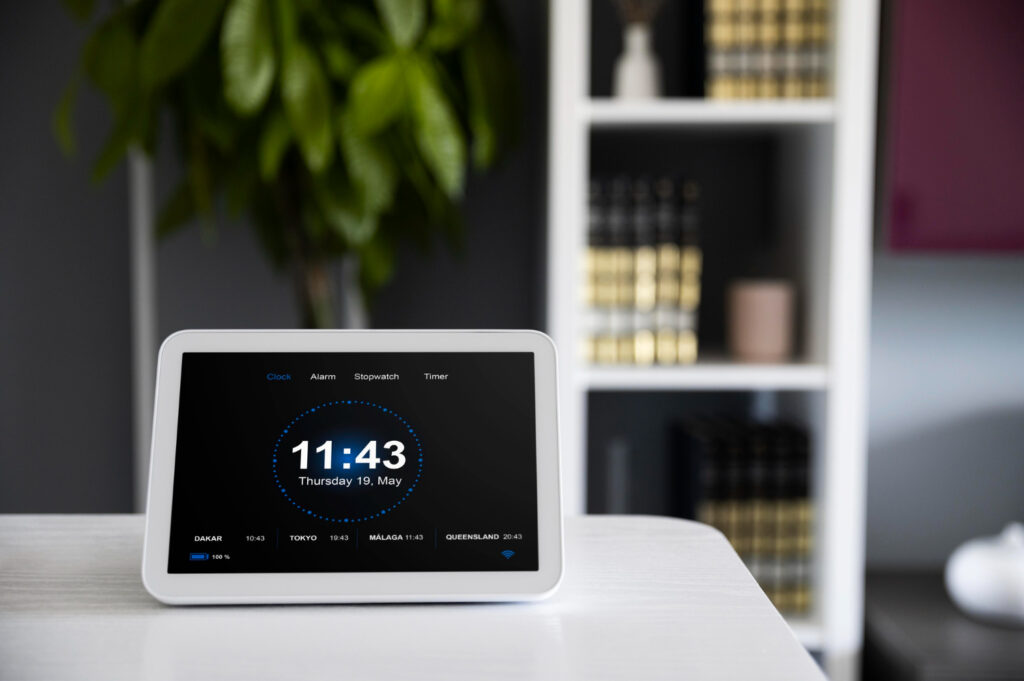Wellness Smart Home Trends 2025 for Healthy Living
Introduction
Smart homes are no longer just about convenience and automation—they are now designed to improve health, well-being, and overall lifestyle. In 2025, wellness smart home trends are shaping how people live by creating environments that support mental clarity, physical health, and emotional balance. From air purification to circadian lighting, today’s smart homes focus on wellness as much as technology.
In this article, we’ll explore the most impactful wellness smart home trends 2025, their benefits, and how they are transforming everyday living into a healthier experience.
Table of Contents
Why Wellness Is the Core of Smart Home Innovation
Smart home technology has evolved from voice commands and automation into a holistic lifestyle approach. The new generation of devices focuses on:
- Mental well-being through stress reduction and relaxation features
- Physical health via air, water, and sleep optimization
- Energy balance with systems that promote sustainable living
- Preventive care through health monitoring and smart alerts
The idea is simple: a home should not only respond to commands but actively support healthier living.
Top Wellness Smart Home Trends in 2025
1. Circadian Lighting Systems
Lighting impacts mood, productivity, and sleep quality. In 2025, circadian lighting has become a leading wellness trend. These systems adjust brightness and color temperature based on the time of day, aligning your home environment with your body’s natural rhythm.
- Morning: Cool white light boosts energy and alertness
- Afternoon: Balanced daylight tones maintain focus
- Evening: Warm amber light prepares the body for rest
This technology reduces sleep disturbances, enhances mood, and supports overall wellness.
2. Smart Air Quality Control
Indoor air pollution is a silent health threat. Smart air purifiers and HVAC systems in 2025 not only filter pollutants but also analyze air quality in real time. These devices automatically adjust ventilation and humidity, ensuring cleaner and healthier indoor environments.
Some systems even detect allergens like pollen or pet dander, providing personalized recommendations for sensitive users.
3. Wellness-Integrated Smart Kitchens
Nutrition plays a key role in well-being, and smart kitchens are now part of wellness smart home trends. Smart refrigerators suggest healthy recipes based on available ingredients, while AI-powered cooking assistants recommend meal plans tailored to dietary needs.
This integration helps families adopt healthier eating habits without added stress.
4. Stress-Reduction Spaces with AI Control
Wellness-oriented smart homes now include relaxation zones. AI-powered systems combine soft lighting, calming music, and aromatherapy diffusers to create a personalized atmosphere for meditation, yoga, or simple relaxation.
These wellness spaces help homeowners recover from daily stress and recharge more effectively.
5. Water Purification and Smart Hydration
Access to clean water is essential for wellness. In 2025, homes are equipped with smart filtration systems that monitor water purity and detect contaminants. Some even remind residents to stay hydrated by syncing with smart bottles and wearables.
This trend ensures both safe drinking water and consistent hydration habits.
6. Smart Sleep Optimization
Sleep technology is a cornerstone of wellness. Smart mattresses, connected sleep trackers, and AI-powered bedroom environments analyze sleep quality and adjust conditions automatically.
- Cooling or warming the bed based on sleep stage
- Adjusting noise levels with smart sound machines
- Monitoring sleep cycles for health insights
This makes restful sleep a core part of the modern wellness smart home trends 2025.
7. Sustainable Wellness Living
Well-being also comes from harmony with the environment. Smart homes in 2025 integrate eco-friendly features like solar-powered systems, water-saving devices, and AI-driven energy management. This not only lowers bills but also reduces stress by creating a sustainable and balanced lifestyle.
Benefits of Wellness Smart Homes
- Better health outcomes through cleaner air, water, and restful sleep
- Improved mental health with stress-reducing smart environments
- Increased productivity by syncing home conditions with natural body rhythms
- Eco-conscious living aligned with sustainable lifestyle choices
- Preventive care at home with smart alerts and monitoring
Challenges in Wellness Smart Home Adoption
Despite rapid growth, there are challenges homeowners must consider:
- Cost of technology: Premium wellness features often come at higher prices.
- Data privacy: Health-related data must be stored securely.
- Device compatibility: Integrating multiple systems can be complex.
These challenges are gradually being addressed by standardization and improved accessibility.
Future of Wellness Smart Homes Beyond 2025
Looking forward, experts predict wellness homes will evolve into self-healing environments where AI proactively adjusts to residents’ physical and mental states. Innovations may include:
- Emotion-sensing AI that adjusts music and lighting to improve mood
- Smart health diagnostics integrated into bathroom mirrors
- Fully automated kitchens that prepare nutrient-balanced meals
For further insights, you can explore Wellness Institute’s smart living research to understand the growing focus on wellness innovation.
Conclusion
The rise of wellness smart home trends 2025 proves that the future of smart living isn’t just about automation—it’s about healthier, happier lifestyles. From circadian lighting to stress-reducing spaces and eco-friendly designs, these innovations are transforming homes into holistic wellness hubs.
If you’re ready to explore the latest devices that blend wellness with technology, visit our Smart Home Gadgets collection and start building a healthier living space today.


